ROME
THE ETERNAL CITY
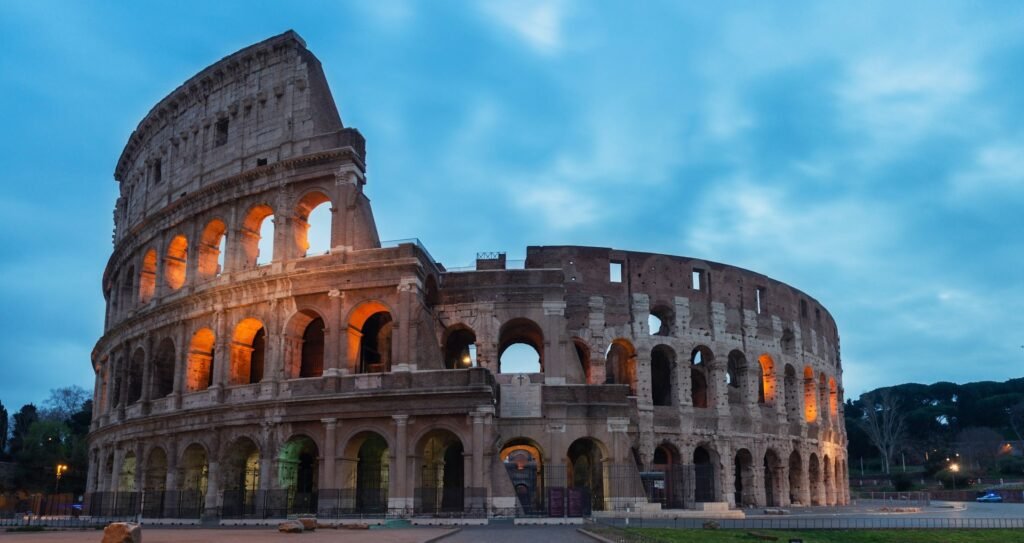
It helps keep this site running, and we appreciate your support!
Sightseeing
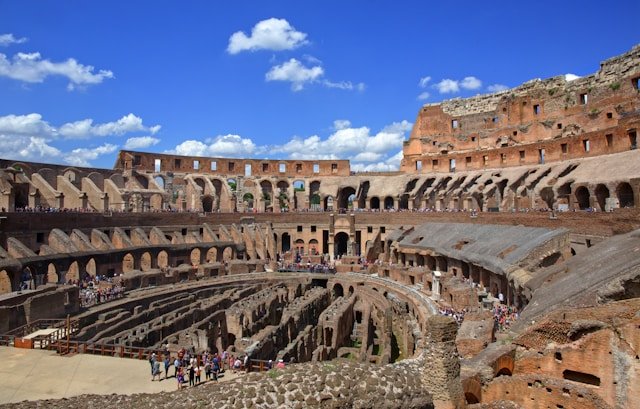
The Colosseum
Stepping into the Colosseum feels like walking through a portal to ancient Rome, where the roar of crowds once echoed as gladiators clashed in epic battles. This massive amphitheater, completed in 80 AD, showcases the ingenuity of Roman engineering with its towering arches and intricate underground chambers, the hypogeum, where animals and fighters prepared. Its weathered stone tells tales of emperors, spectacles, and the city’s gritty past, while the sheer scale—holding up to 80,000 spectators—leaves you in awe. It’s a must-visit not just for its historical weight but for the visceral connection it offers to Rome’s dramatic legacy.
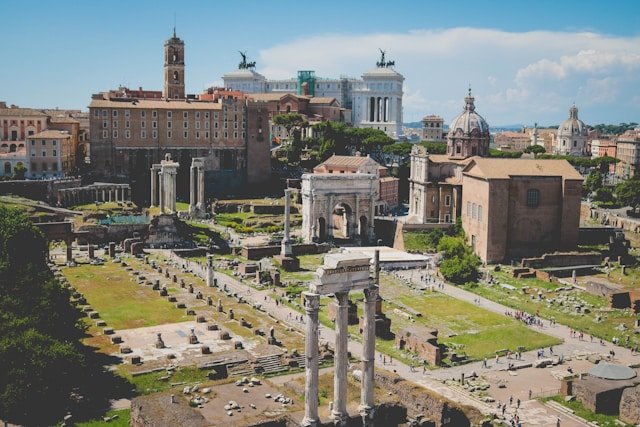
The Roman Forum
Just beside the Colosseum, the Roman Forum unfolds as a sprawling time capsule of ancient civic life, where senators debated, merchants haggled, and triumphs were celebrated. Once the beating heart of the empire, its scattered ruins—like the Temple of Saturn and the Arch of Titus—paint a vivid picture of a bustling political and religious hub. Wandering through the crumbled columns and basilicas, you can almost hear the footsteps of toga-clad Romans. It’s a captivating dive into the everyday grandeur of antiquity, enriched by its proximity to the city’s other iconic landmarks.
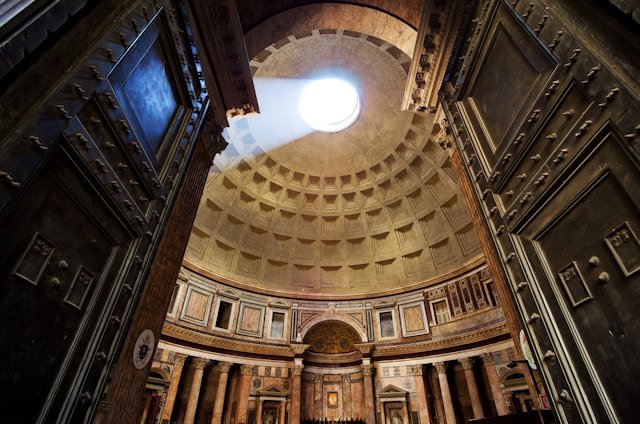
Pantheon
The Pantheon stands as a breathtaking testament to Roman architectural brilliance, its massive unreinforced concrete dome—still the world’s largest of its kind—crowning a space that feels both eternal and serene. Built as a temple to all gods, its oculus pierces the sky, casting a beam of light that dances across the perfectly preserved interior. The harmony of its proportions and the intricate coffered ceiling leave visitors marveling at how it’s endured since 125 AD. A quiet moment here, amid the echoes of history, reveals why it’s one of Rome’s most cherished treasures.
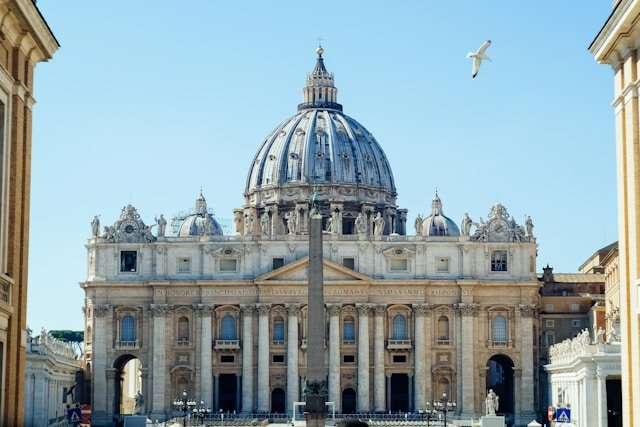
St. Peter’s Basilica
Rising majestically in Vatican City, St. Peter’s Basilica overwhelms with its sheer size and artistic splendor, a pilgrimage site that doubles as a gallery of masterpieces. Michelangelo’s “Pietà,” cradling sorrow in marble, greets you near the entrance, while Bernini’s towering baldacchino marks the tomb of St. Peter below. Climb the dome—designed by Michelangelo himself—for a panoramic reward of Rome’s skyline. Every inch, from the gilded ceilings to the mosaic-clad walls, reflects centuries of devotion and craftsmanship, making it a soul-stirring stop for art lovers and spiritual seekers alike.
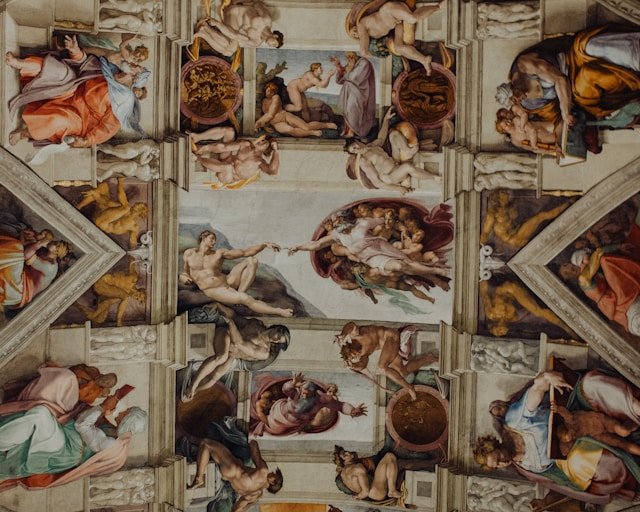
Sistine Chapel
Tucked within the Vatican Museums, the Sistine Chapel is a jaw-dropping immersion into Michelangelo’s genius, where his ceiling frescoes and “The Last Judgment” transform a simple room into a divine canvas. The nine scenes from Genesis, culminating in the iconic “Creation of Adam,” ripple with movement and emotion, while the altar wall’s swirling judgment scene stuns with its intensity. Despite the crowds, the sheer power of the art—painted over four grueling years—commands silence and awe. It’s a pinnacle of human creativity that rewards every glance upward.
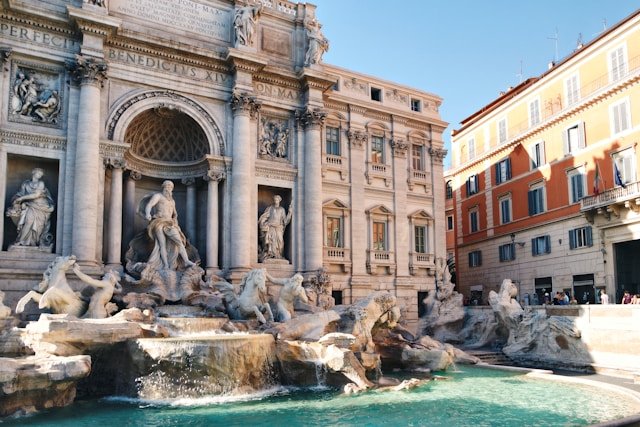
Trevi Fountain
The Trevi Fountain bursts into view like a theatrical set piece, its Baroque splendor dominating a tiny piazza with Neptune commanding the waves. Carved by Nicola Salvi in 1762, the cascading waters and sculpted sea creatures create a symphony of motion and sound. Tossing a coin over your shoulder—legend promises a return to Rome—feels like joining a timeless ritual amid the throngs of visitors. Its dramatic beauty and the lively energy of the surrounding square make it an unforgettable slice of Roman romance.
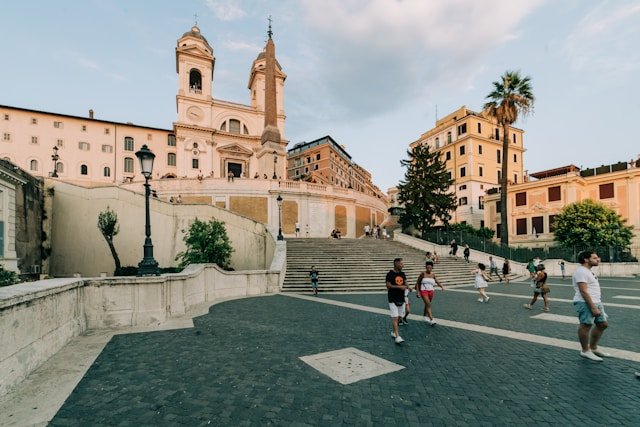
Spanish Steps
Climbing the Spanish Steps feels like stepping into a postcard, with 135 graceful stairs leading up to the elegant Trinità dei Monti church framed against the sky. Built in the 1720s, this sweeping staircase connects Piazza di Spagna below with its fountain by Bernini’s father to the serene heights above. It’s a perfect perch for watching Rome’s daily theater unfold—street artists, shoppers, and lovers sipping espresso. The blend of architecture, history, and vibrant people-watching makes it a quintessential stop for soaking in the city’s charm.
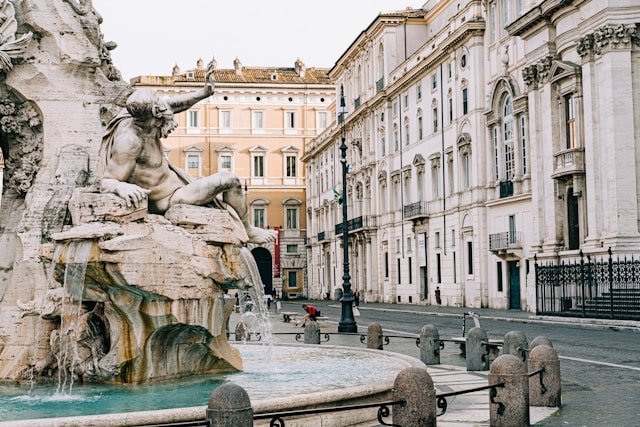
Piazza Navona
Piazza Navona dazzles with its Baroque flair, a long oval square where Bernini’s Fontana dei Quattro Fiumi steals the show with its dynamic river gods symbolizing the world’s great waterways. Flanked by two more fountains and the grand Sant’Agnese in Agone church, it’s a living gallery of art and architecture. Once a stadium for Roman games, today it hums with street performers, artists, and café tables spilling onto the cobblestones. Its festive atmosphere and stunning design make it a place to linger and savor Rome’s creative spirit.
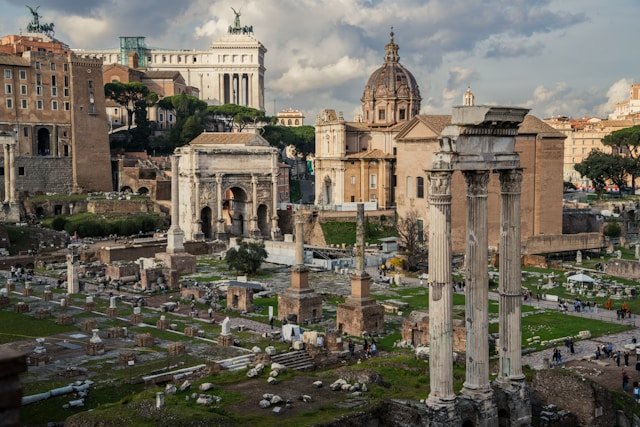
The Palatine Hill
Crowning one of Rome’s seven hills, the Palatine Hill offers a quiet escape into the origins of the city, where myth says Romulus founded Rome in 753 BC. The ruins of imperial palaces—like the sprawling Domus Flavia—whisper of ancient luxury, their faded frescoes and vast courtyards overlooking the Forum below. Strolling through olive trees and wildflowers, you’re treated to sweeping views of the Colosseum and Circus Maximus. It’s a serene, history-drenched spot that connects you to Rome’s legendary beginnings.
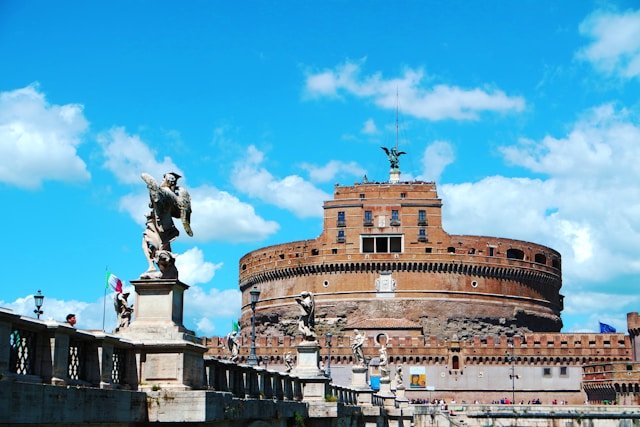
Castel Sant’Angelo
Originally Emperor Hadrian’s mausoleum, Castel Sant’Angelo looms along the Tiber with its cylindrical bulk and storied past as a fortress, prison, and papal refuge. A bridge adorned with Bernini’s angel statues leads you to its gates, where inside, winding ramps and Renaissance rooms reveal artifacts and history. The terrace atop offers a postcard-worthy view of St. Peter’s dome and the river winding through Rome. Its evolution from tomb to castle, paired with its dramatic setting, makes it a fascinating stop for history buffs and view-seekers alike.
Rome Adventures: Pasta, Secrets, and Scooter Rides
Uncover Rome’s lesser-known treasures on a secret walking tour. These guided jaunts slip you into hidden gardens, eerie underground sites like the Catacombs of Priscilla, or tucked-away churches brimming with Caravaggio masterpieces. Away from the tourist crush, you’ll catch stories and sights—like the quirky Aventine Keyhole—that most miss. Companies like Roma Sotterranea make it a history buff’s dream.
Wine Tasting in Trastevere: Sip and Savor
Gladiator School Experience: Fight Like a Roman
Winter Deals and Airport Choices
Hotels
Rome Bites: Pizza, Supplì, and Trattoria Treasures
Rome Pointers: Euros, Etiquette, and Essentials
Tipping: A Little Extra Love
Rome Moves: Métro, Feet, and Rides
Taxis/Uber: Ride When You Need To
Rome Skies: Heat, Rain, and Seasonal Charm
Value Index
Safety
Rome is generally safe for tourists, with low rates of violent crime, allowing visitors to enjoy the city’s sights and culture both day and night.
Nonetheless, vigilance is advised due to the prevalence of pickpocketing in crowded tourist spots like the Colosseum, Trevi Fountain, and on public transport. Tourists should also be cautious of scams, particularly those involving unsolicited gifts or guides leading you to specific shops or restaurants. Areas around Termini Station can feel less secure, especially at night, so it’s wise to be more alert there.
Overall, with common sense precautions, Rome is a welcoming and secure destination for travelers.
